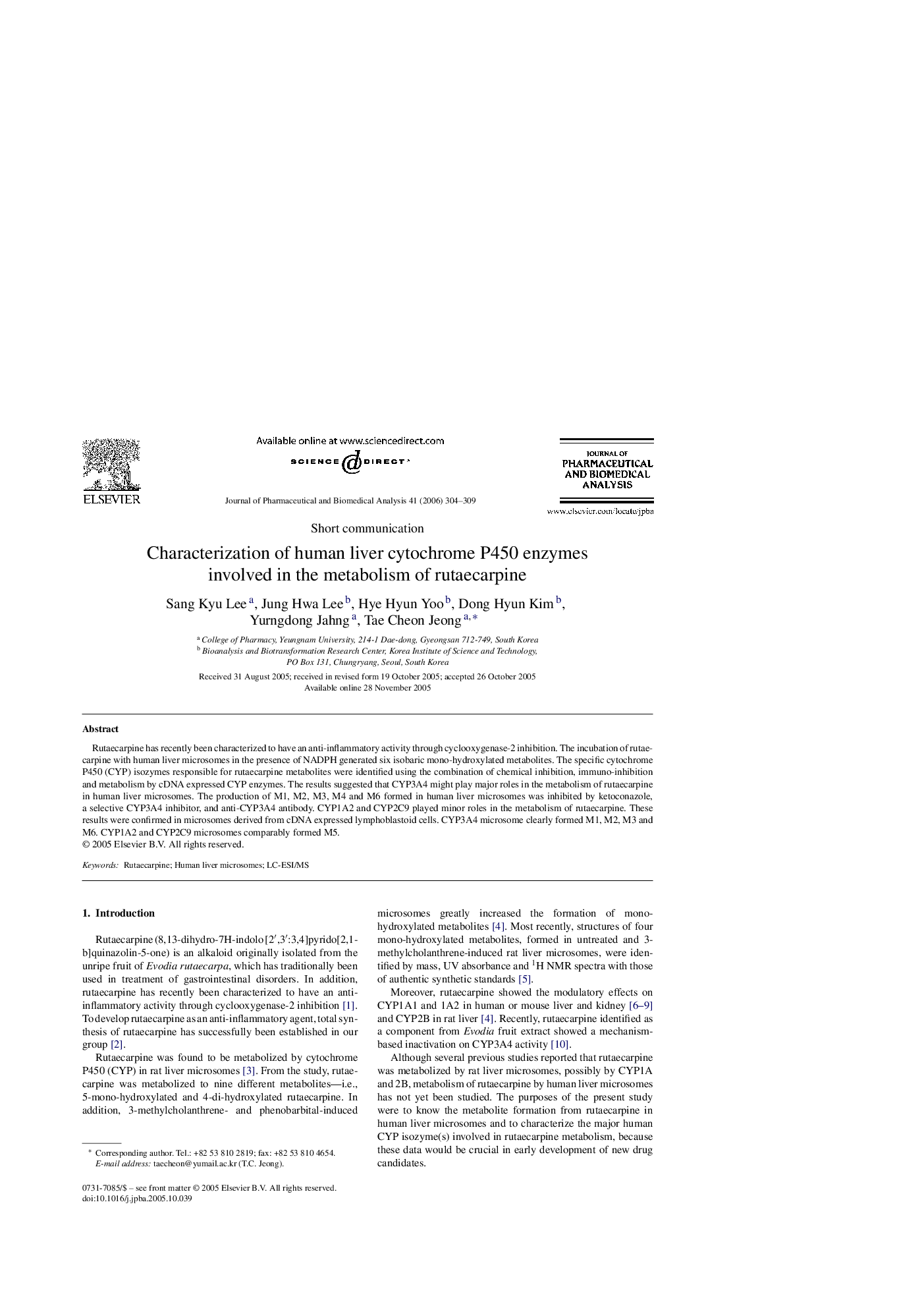| Article ID | Journal | Published Year | Pages | File Type |
|---|---|---|---|---|
| 1225090 | Journal of Pharmaceutical and Biomedical Analysis | 2006 | 6 Pages |
Rutaecarpine has recently been characterized to have an anti-inflammatory activity through cyclooxygenase-2 inhibition. The incubation of rutaecarpine with human liver microsomes in the presence of NADPH generated six isobaric mono-hydroxylated metabolites. The specific cytochrome P450 (CYP) isozymes responsible for rutaecarpine metabolites were identified using the combination of chemical inhibition, immuno-inhibition and metabolism by cDNA expressed CYP enzymes. The results suggested that CYP3A4 might play major roles in the metabolism of rutaecarpine in human liver microsomes. The production of M1, M2, M3, M4 and M6 formed in human liver microsomes was inhibited by ketoconazole, a selective CYP3A4 inhibitor, and anti-CYP3A4 antibody. CYP1A2 and CYP2C9 played minor roles in the metabolism of rutaecarpine. These results were confirmed in microsomes derived from cDNA expressed lymphoblastoid cells. CYP3A4 microsome clearly formed M1, M2, M3 and M6. CYP1A2 and CYP2C9 microsomes comparably formed M5.
